70th Anniversary
TRUAX FIELD UNIT HISTORY
The 176th Fighter Squadron was organized at Truax Field in 1948. The F-51 Mustang was the first aircraft assigned to the unit. In 1950, 10 of the unit’s 25 Mustangs were shipped to Korea in support of the Korean War effort. In February 1951, the 176th Fighter Squadron was called to active duty but remained at Truax Field.
During the active duty tour, the 176th Fighter Squadron converted its aircraft to the F-89A Scorpion. They became the first Air National Guard unit to fly the modern jet fighter. In October of 1952, the 176th returned to reserve status and state control and converted back to the F-51 Mustang.
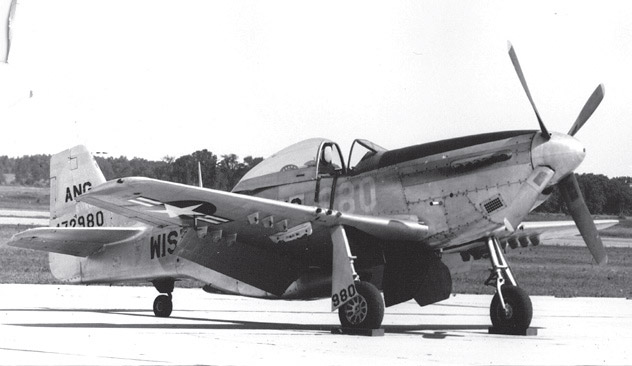
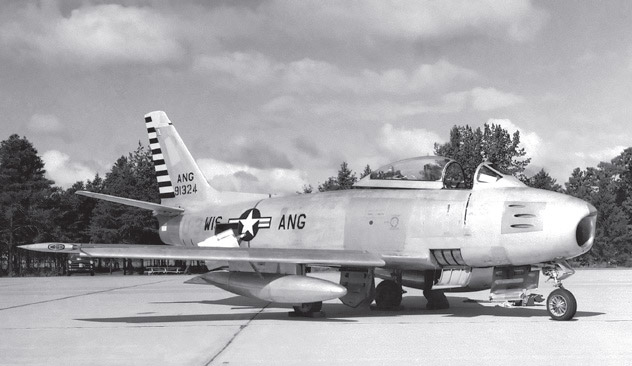
The following year the unit was re-designated the 176th Fighter Interceptor Squadron and converted to the F-86A Sabre. This was the legendary fighter that gained fame as a “MIG Killer” during the Korean War.
In October 1955, the 176th Fighter Interceptor Squadron converted back to the F-89 Scorpion. During the next 12 years the 176th was equipped with each model of the F-89: the D model with 104 2.75 inch rockets, the H model with rockets and missiles, and the J model with the Genie rocket. During that 12 year period, the role of the 176th went from that of stand-by reserve force to that of a force of being, a fully participating member of the air defense of the North American continent.
The unit began transitioning from the Scorpion to the F-102 Delta Dagger in 1965. For the next nine years, pilots and crews were on a five minute (24 hours/day) alert commitment.
In 1972, the 176th was recognized as the best F-102 unit in the U.S. Air Force. During the year the unit won the William Tell Air-to-Air Weapons meet plus six other major awards.
In 1974, the 176th underwent a major change in aircraft, mission, and designation. The role of the unit transitioned from fighter squadron to support squadron when the unit was re-designated the 176 Tactical Air Support Squadron (TASS). The aircraft was converted to the O-2 Skymaster observation aircraft with the Forward Air Control mission.


After five years, 1979, the unit was one of the first to become Jet Forward Air Control with the OA-37 Dragonfly. This role wouldn’t last very long. The wing would phase out the Dragonfly two years later.
In 1981, the 176th Tactical Air Support Squadron transitioned again into a fighter role when the unit was re-designated as the 128th Tactical Fighter Wing. This time the Wing’s aircraft was converted into the A-10 Thunderbolt II. During the next 11 years, the Wing performed the close air support mission, not only in support of Army units located throughout the United States, but on a global scale as well. Numerous deployments to Europe and Central America clearly demonstrated the Wing’s readiness for worldwide tasking.
In 1991, the unit received the first “OUTSTANDING” rating ever given to any fighter unit for a Unit Effectiveness Inspection. That achievement was a first for any active or reserve unit in the history of the Tactical Air Command. In addition, during this time, the unit received two Outstanding Unit Awards and numerous flight safety awards.
In 1992, the unit was re-designated the 128th Fighter Wing, under the newly formed Air Combat Command, and it began converting to the F-16 Fighting Falcons. The roles of the new mission include aerospace control and force application. Typical missions included counter air, strategic attack, interdiction, and close air support.
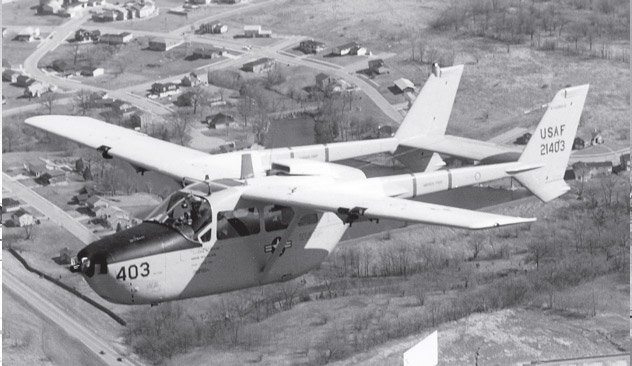
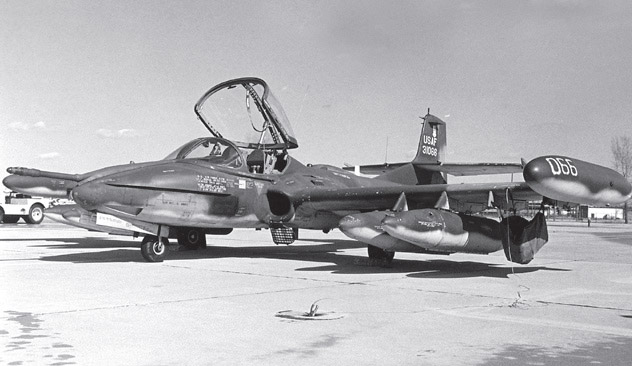
In October 1995, the 128th Fighter Wing was re-designated the 115th Fighter Wing with no change in mission or aircraft. The unit continued in readiness and preparing for all assigned tasking. In 1997 and 1998, the unit received its first F-16 combat missions, deploying to Incirlik AB, Turkey, for Operation Northern Watch and to Al-Jabber Air Base, Kuwait, for Operation Southern Watch; both operations enforcing no-fly zones over Iraq.
The 115th FW began supporting the Global War on Terrorism on 11 September 2001. The 115th FW was tasked to provide homeland defense under the operational command of NORAD (North American Aerospace Defense Command). This was the first time since 1974 that the 115th FW was given a 24/7 alert commitment. In 2004 the unit deployed to the 379th Air Expeditionary Wing, Southwest Asia, and in 2006, 2008, and 2009 the unit deployed to Joint Base Balad, Iraq in support of Operation Iraqi Freedom.
In 2005 and 2006, the 115th FW provided support to Operation Jump Start and Hurricane Katrina relief. In 2005, the unit again received an “OUTSTANDING” in the Unit Compliance Inspection with 99.4% compliance rate which was the highest rating to date until 2010 when the unit bested its earlier rating with a 99.5 percent on the UCI.
In January 2013 the 115th FW completed an Aerospace Expeditionary Deployment in support of U.S. Air Forces in Europe, followed by the unit’s first Theater Security Package (TSP) deployment to Kadena Air Base, Japan in 2015. In February 2015 the 115th FW was also designated as an active associate, marking the first time active-duty Airmen had been stationed at Truax Field in more than 40 years.
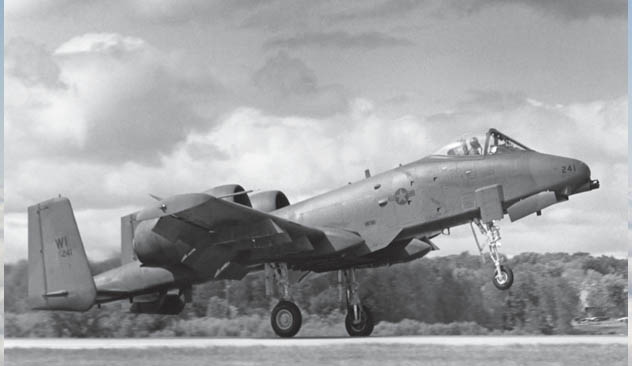

In 2017, the 115th FW completed its second U.S. Pacific Command TSP deployment to Kunsan Air Base, Korea. The wing also supported multiple domestic operations deployments including Operation Northern Devastation in northern Wisconsin, and support of hurricane relief efforts in Puerto Rico and the U.S. Virgin Islands.
The men and women of the Madison Air National Guard are proud to be serving their community, state and nation. They recognize and appreciate the contributions of the Airmen who have served before them, helping to make the 115th FW one of the best ANG units in the world.
